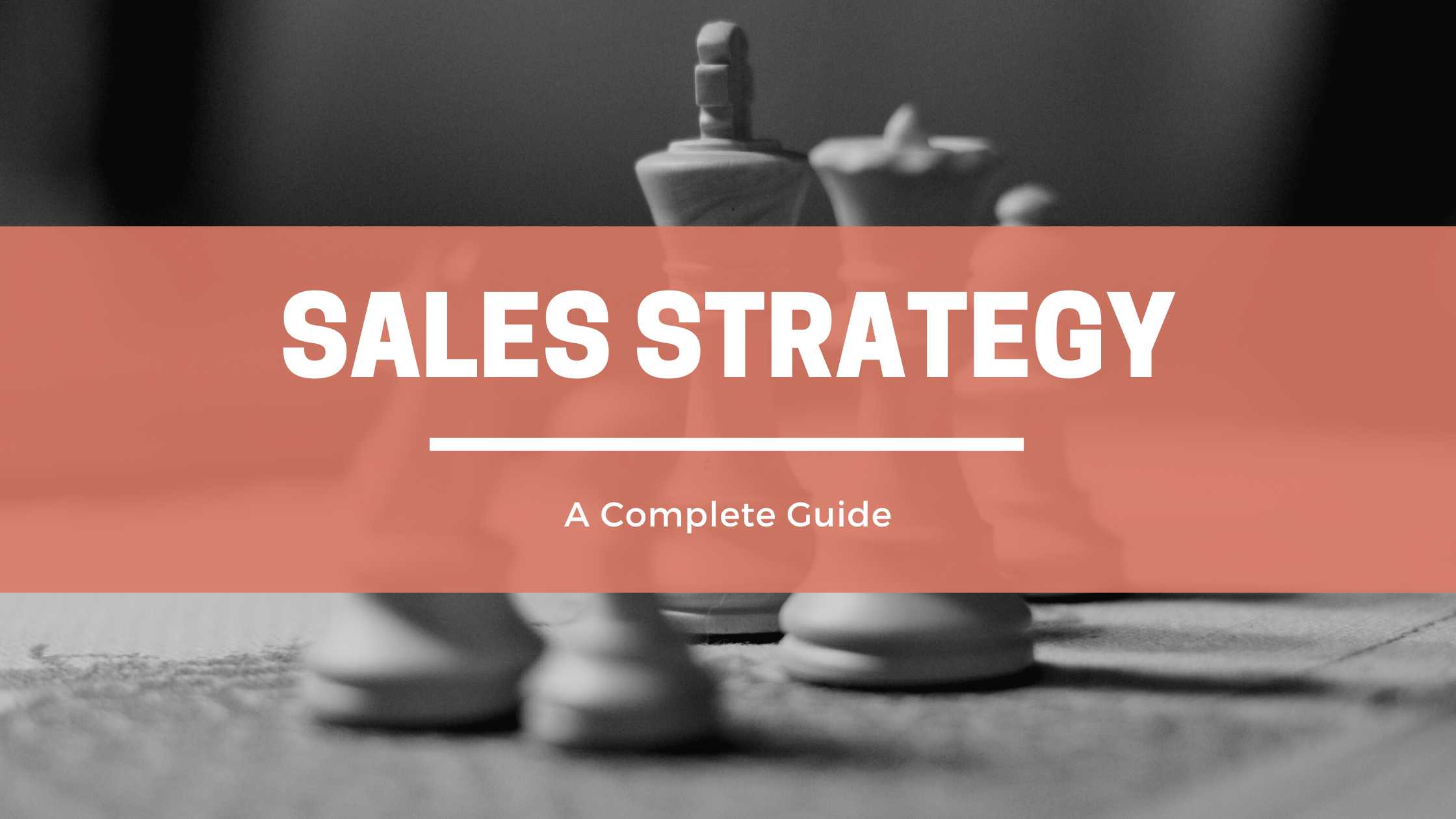Sales strategy is a crucial aspect of any business. It is the plan or approach that a company or individual uses to achieve their sales goals and grow their business.
What is sales strategy?
A sales strategy is a plan or approach that a company or individual uses to achieve their sales goals. It outlines the actions and tactics that will be taken to identify and target potential customers, persuade them to make a purchase, and close the sale.
What is an example of sales strategy?
An example of a sales strategy might be a company’s plan to focus on building relationships with key decision-makers at large corporations in order to secure bulk orders for its products. This could involve developing a targeted marketing campaign, offering special pricing or incentives for volume purchases, and providing excellent customer service to encourage repeat business.
What is the importance of sales strategy?
The importance of a sales strategy lies in its ability to help a company focus its resources and efforts on the most effective ways to reach and persuade potential customers. By developing a clear and well-thought-out sales strategy, a company can increase its chances of success and achieve its sales goals more efficiently. A good sales strategy can also help a company adapt to changing market conditions and stay competitive.
What is the benefit of sales strategy?
There are several benefits to developing a sales strategy:
- A sales strategy helps to define and clarify sales goals and objectives, which can improve focus and drive results.
- A sales strategy provides a roadmap for identifying and targeting potential customers, which can increase the efficiency and effectiveness of sales efforts.
- A sales strategy can help a company to stand out from its competitors and better position itself in the market.
- A sales strategy can help to optimize resources and allocate them effectively, which can improve the return on investment of sales efforts.
- A sales strategy can help to identify and address any potential challenges or obstacles that may arise during the sales process.
What are the 7 elements of sales strategy?
The seven elements of a sales strategy are:
- Target market: The specific group of customers that the sales strategy is designed to reach.
- Value proposition: The unique benefits or value that the product or service offers to the target market.
- Sales channels: The channels through which the product or service will be sold, such as online, in-store, or through a sales team.
- Pricing strategy: The approach to setting prices for the product or service, including any discounts or promotions that may be offered.
- Marketing strategy: The plan for promoting the product or service to the target market, including tactics such as advertising, public relations, and social media marketing.
- Sales plan: The specific steps and tactics that will be taken to reach the target market, persuade them to make a purchase, and close the sale.
- Metrics and targets: The key performance indicators and targets that will be used to measure the success of the sales strategy.
What is the method for determining sales strategy?
There are several methods for determining a sales strategy, including:
- Market research: Analyzing data on the target market, including their needs, preferences, and behaviors, to inform the sales strategy.
- Competitive analysis: Examining the sales strategies and approaches of competitors to identify opportunities and potential challenges.
- Customer feedback: Gathering feedback from current and potential customers to inform the sales strategy and identify areas for improvement.
- Sales data analysis: Analyzing data on past sales performance to identify trends and patterns that can inform the sales strategy.
What are the types of sales strategy?
There are several types of sales strategies that a company or individual can use, depending on their goals and the needs of their target market.
Niche selling
Niche selling is a sales strategy that focuses on a specific niche or segment of the market. This approach allows a company to target a smaller, more specialized group of customers and tailor their product or service to meet their specific needs and preferences. Niche selling can be an effective way for a company to differentiate itself in a crowded market and build a loyal customer base.
Mass selling
Mass selling is a sales strategy that focuses on selling a product or service to the broadest possible audience. This approach typically involves using mass marketing techniques such as advertising and promotions to reach a large number of potential customers. Mass selling can be an effective way for a company to generate a high volume of sales and grow its market share.
Land and expand
Land and expand is a sales strategy that involves selling a product or service to a specific customer or group of customers, with the goal of expanding the relationship over time. This approach involves identifying a key customer or group of customers that are likely to be interested in the product or service and targeting them with a tailored sales pitch. Once the initial sale is made, the company can then work to expand the relationship by upselling additional products or services or cross-selling related products.
Product-led growth (PLG)
Product-led growth (PLG) is a sales and marketing strategy that focuses on using the product itself as the primary driver of growth. This approach involves offering a product or service that is so compelling and easy to use that it attracts and retains customers on its own, without the need for traditional marketing or sales efforts. PLG relies on the product’s own value proposition and user experience to drive adoption and growth, rather than relying on external marketing or sales efforts.
Sales-led growth (SLG)
Sales-led growth (SLG) is a sales and marketing strategy that focuses on using the sales team as the primary driver of growth. This approach involves empowering the sales team to identify and pursue new opportunities, generate leads, and close deals. The goal of SLG is to drive growth through direct sales efforts, rather than relying on marketing or other indirect channels.
Demand generation
Demand generation is a marketing strategy that focuses on creating demand for a product or service by attracting and engaging potential customers. This approach involves using a variety of tactics such as advertising, content marketing, social media marketing, and email marketing to generate leads and build interest in the product or service. The goal of demand generation is to create a pipeline of qualified leads that can be passed along to the sales team for follow-up and conversion.
Referral
Referral is a sales strategy that involves encouraging current customers to refer new business to the company. This approach involves identifying satisfied customers who are likely to be willing to refer others and incentivizing them to do so through programs such as referral rewards or referral discounts. Referral is an effective way for a company to generate new leads and build its customer base, as referrals from satisfied customers tend to be more likely to result in sales.
What is sales strategic plan?
A sales strategic plan is a long-term plan that outlines the steps and tactics that a company or individual will take to achieve their sales goals. It typically includes a detailed analysis of the target market, the value proposition of the product or service being sold, the sales channels and pricing strategy that will be used, and the marketing and sales efforts that will be undertaken. A sales strategic plan may also include metrics and targets for measuring the success of the sales efforts and identifying areas for improvement.
What are 4 general ways to increase sales?
There are several general ways to increase sales, including:
- Expanding the target market: Identifying and targeting new customer segments or geographic areas can help to increase sales.
- Improving the product or service: Enhancing the features or benefits of the product or service being sold can make it more appealing to potential customers and increase sales.
- Increasing marketing and sales efforts: Investing in marketing and sales efforts such as advertising, content marketing, and sales training can help to generate more leads and close more sales.
- Improving the sales process: Streamlining and optimizing the sales process can help to increase efficiency and close more deals.
How to create a sales strategy
To create a sales strategy, follow these steps:
- Define your sales goals: Clearly articulate what you want to achieve through your sales efforts.
- Identify your target market: Determine who your ideal customers are and what their needs and preferences are.
- Develop a value proposition: Clearly articulate the unique benefits or value that your product or service offers to your target market.
- Determine your sales channels: Identify the channels through which you will sell your product or service, such as online, in-store, or through a sales team.
- Develop a pricing strategy: Determine how you will set prices for your product or service, including any discounts or promotions that may be offered.
- Create a marketing strategy: Develop a plan for promoting your product or service to your target market, including tactics such as advertising, public relations, and social media marketing.
- Develop a sales plan: Outline the specific steps and tactics that you will take to reach your target market, persuade them to make a purchase, and close the sale.
- Set metrics and targets: Identify the key performance indicators and targets that you will use to measure the success of your sales strategy and identify areas for improvement.
What is a sales strategist?
A sales strategist is a professional who is responsible for developing and implementing the sales strategy for a company or organization. The role of a sales strategist typically involves analyzing data on the target market and competitive landscape, identifying opportunities for growth, and developing and executing a plan to achieve sales goals. A sales strategist may also be responsible for training and coaching the sales team, monitoring and analyzing sales performance, and adapting the sales strategy as needed to meet changing market conditions.
What is a sales approach?
A sales approach is the overall approach that a salesperson takes when interacting with potential customers. It includes the way in which the salesperson communicates with the customer, the methods and techniques they use to persuade the customer to make a purchase, and the specific steps they take to close the sale. A sales approach can be influenced by a variety of factors, including the salesperson’s personality, the product or service being sold, and the specific needs and preferences of the customer.
What is the difference between sales strategy and sales tactic?
The difference between a sales strategy and a sales tactic is that a sales strategy is the overall plan or approach that a company or individual takes to achieve their sales goals, while a sales tactic is a specific action or activity that is part of the overall sales strategy. For example, a sales strategy might be to increase market share by targeting a new customer demographic, while a sales tactic might be to offer discounts to new customers as part of that strategy. A sales strategy is typically broader and longer-term in nature, while sales tactics are more specific and focused on the immediate actions that will be taken to achieve the sales goals.

